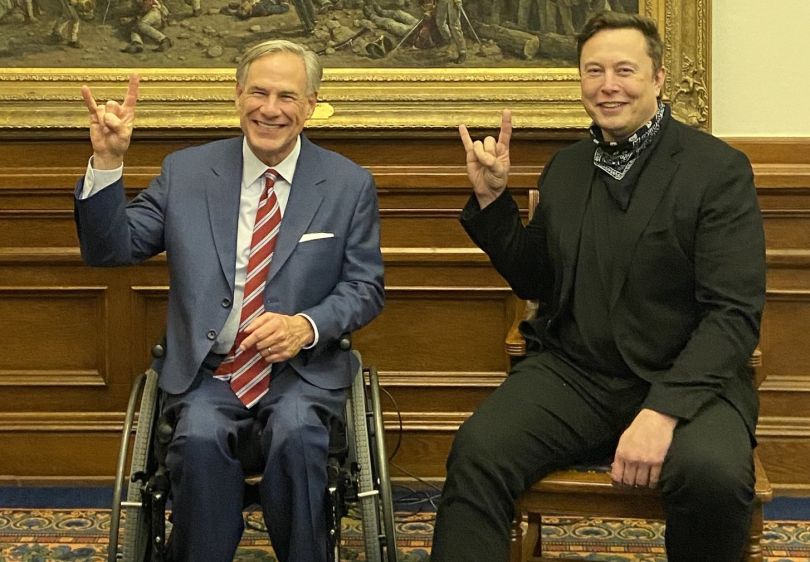
Tesla just confirmed its long-rumored plans to open its next gigafactory in Austin, but its expansion to central Texas might not stop there.
The electric vehicle maker’s next move, according to John Boyd, a corporate site selection expert who’s been watching Tesla closely for years, could be relocating its corporate headquarters to the region.
“Given this new gigafactory in Austin, this now renews talk and puts a spotlight on this idea of Tesla moving its corporate headquarters, which now is currently spread over three campuses in the Bay Area and in the Silicon Valley, into Austin,” Boyd, head of The Boyd Company economic consulting group, told Built In.
UPDATE 8/13/20: Tesla has already begun posting open roles in Austin, including jobs in HR, engineering/IT, operations and more. Browse them here.
During Tesla’s second quarter earnings call on July 22, CEO Elon Musk announced that the company plans to call Austin home for its next gigafactory. Tesla, which is now the most valuable automotive company in the world, will be recruiting 5,000 workers for its new Austin gigafactory, making it the largest tech employer in the city.
“If anyone is interested in looking at Giga Texas, with engineering, production, whatever the case may be, please let us know,” Musk said during the earnings call. “This is, we’re going to be doing a major factory there.”
The new factory will be located near the Austin-Bergstrom International Airport and produce the company’s new Cybertruck, as well as Tesla Models 3 and Y “for the eastern half of North America,” Musk said. The site, which Musk called an “ecological paradise,” will stretch about 2,000 acres along the Colorado River and offer a public boardwalk, hiking and biking trail.
“Birds in the trees, butterfly, fish in the stream, and they will be open to the public as well,” Musk said. “So not closed and only Tesla.”
The announcement came a week after Travis County commissioners approved a 70 percent property tax rebate on the first $1.1 billion Tesla invests in the site, which could be worth about $14 million over the next 10 years The Del Valle school board also approved its own incentives package for the electronic vehicle maker, which will save the company about $46 million in property taxes. Bloomberg reported that the Austin gigafactory represents the largest economic-development agreement in the city’s history.
Tesla’s announcement did not come without controversy. During a June public hearing, more than 150 union workers and activists questioned the need for a billion-dollar company to receive government incentives, as well as Tesla’s controversial record on workers’ rights. Boyd noted that Austin’s gigafactory incentives package, though locally historic, is still smaller than Nevada’s, which in 2014 offered Tesla $1.3 billion over the next 20 years to call Nevada home for its first U.S. gigafactory.
“Travis County could either go ahead and give Tesla that tax cut and still collect $108 million over the next 25 years, or take a stand on a priority of incentives and let Tesla go to Tulsa and collect $0,” Boyd said.
He added that Texas’ status as a right-to-work state, which means that employees are not guaranteed union protection, was likely a big factor in attracting Tesla to Austin.
Despite these concerns, Tesla’s announcement is arguably a boon for the Austin tech scene and the local economy more generally at a particularly trying moment for the region.
Amber Gunst, head of the Austin Technology Council, said the gigafactory presents a work opportunity for experienced tech professionals, as well as the bar and restaurant workers who were laid off during the first wave of the COVID-19 pandemic in Texas. Tesla has said salaries for entry-level positions at the Austin gigafactory will start at $35,000.
“This offers people who are looking for skilled labor and who are looking for opportunities to grow, and advance their lives and their families, and their opportunities, to be able to get that experience,” Gunst told Built In. “If they decide that they don’t want to continue working for the company, having Tesla on your resume looks really good.”
She added the city’s strong tech talent pool and unique branding also likely played a role in Tesla’s months-long decision.
Rumors that Tesla was eyeing Austin as the location for its next assembly plant started swirling in February when Musk fired off a few cryptic tweets. Then, company leadership unveiled its official pitch for an Austin gigafactory at a public hearing last month. Austin’s gigafactory represents the Palo Alto-based company’s fifth worldwide.
“This is a nice split between Texas and California,” Musk said. “And just to emphasize, we’ll continue to grow in California, but we’ll be creating a massive factory and cybertruck and semi programs in Texas.”



